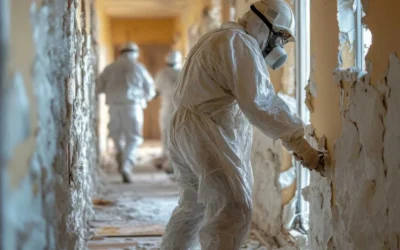Asbestos has been linked to a wide range of serious health problems, including aggressive cancers and pulmonary fibrosis. It’s also one of the most common contaminants found in the air of houses built before 1980.
According to the National Institute for Occupational Safety and Health (NIOSH), a subsidiary of the Centers for Disease Control and Prevention (CDC), there is no way to know how extensive the asbestos problem is in the United States.
Though asbestos is relatively harmless when captured in solid materials, your next remodeling project could send asbestos particles into the air, which is why the first step in safely removing asbestos is knowing where it typically hides in most homes.
The home’s exterior
Tiled siding and composite roofing materials often contain asbestos. These present minimal danger to the people inside the house as long as they remain in good condition. If they become weathered and damaged, or if you replace the siding without taking care not to break the old tiles, they can release asbestos particles into the air.
Insulation
Asbestos-containing insulation runs through many homes, and is one of the most likely sources of airborne particles when disturbed. One of the biggest concerns is vermiculite insulation, which is often used as a loose-fill insulation. Be especially careful in areas where insulation may be exposed, such as:
- Attics, especially with visible loose insulation
- Unheated crawl spaces
- Open wall cavities, such as unfilled spaces for light fixtures or wall outlets
- Around duct work
Never disturb the insulation without wearing respiratory protection and, especially in older homes, always consult an inspector before removing asbestos-containing insulation. Any suspected asbestos insulation should never be disturbed except by a qualified professional, as any movement could send hazardous fibers into the air.
The floor and walls
Vinyl tiles often contain asbestos. Pay particular attention to very dark-colored older tiles, hard vinyl tiles, and some types of vinyl sheet flooring. In these older homes, the adhesives used to install flooring of all types may also be an asbestos hazard.
Paints and plasters of various types, especially older textured paint, often contain asbestos. There’s little danger of airborne particles in their usable, cured form, but are a big concern when stripping down and replacing these old materials. The plaster used in older homes for molding and sealing is also likely to contain asbestos, as is many types of drywall.
Around furnaces and fireplaces
Asbestos is resistant to fire and high heat, so it’s often found around wood-fueled fireplaces. This might be in the form of asbestos paper on the walls or an asbestos coating on the surrounding floor. Gas fireplaces may also have asbestos in the form of faux ash or embers. The gaskets on doors of gas or oil-fueled furnaces frequently contain asbestos. Removing asbestos gaskets is advisable only if the old gasket is weathered and damaged.
Protecting the plumbing
Because of its insulating properties, asbestos tape may be placed around pipes that carry hot tap water, as well as boiler-heated water or steam pipes throughout the home. It may also be found on pipes that are exposed to the elements such as those on exterior walls, or in the building’s crawl space or basement.
Asbestos-related illnesses and legal claims continue to be a concern. Rental owners and property managers can be held liable if tenants become ill, especially if it can be proven that asbestos-containing materials were mishandled or ignored.
Removing asbestos comes with inhalant risks that can’t be ignored, and should always be approached with caution. Never do major renovations on older buildings without consulting an asbestos inspector to help protect everyone’s long-term health.
Download a free copy of our Asbestos, Lead Paint & Mold eBook to learn how to mitigate the liability risks associated with common environmental threats found in residential properties.



